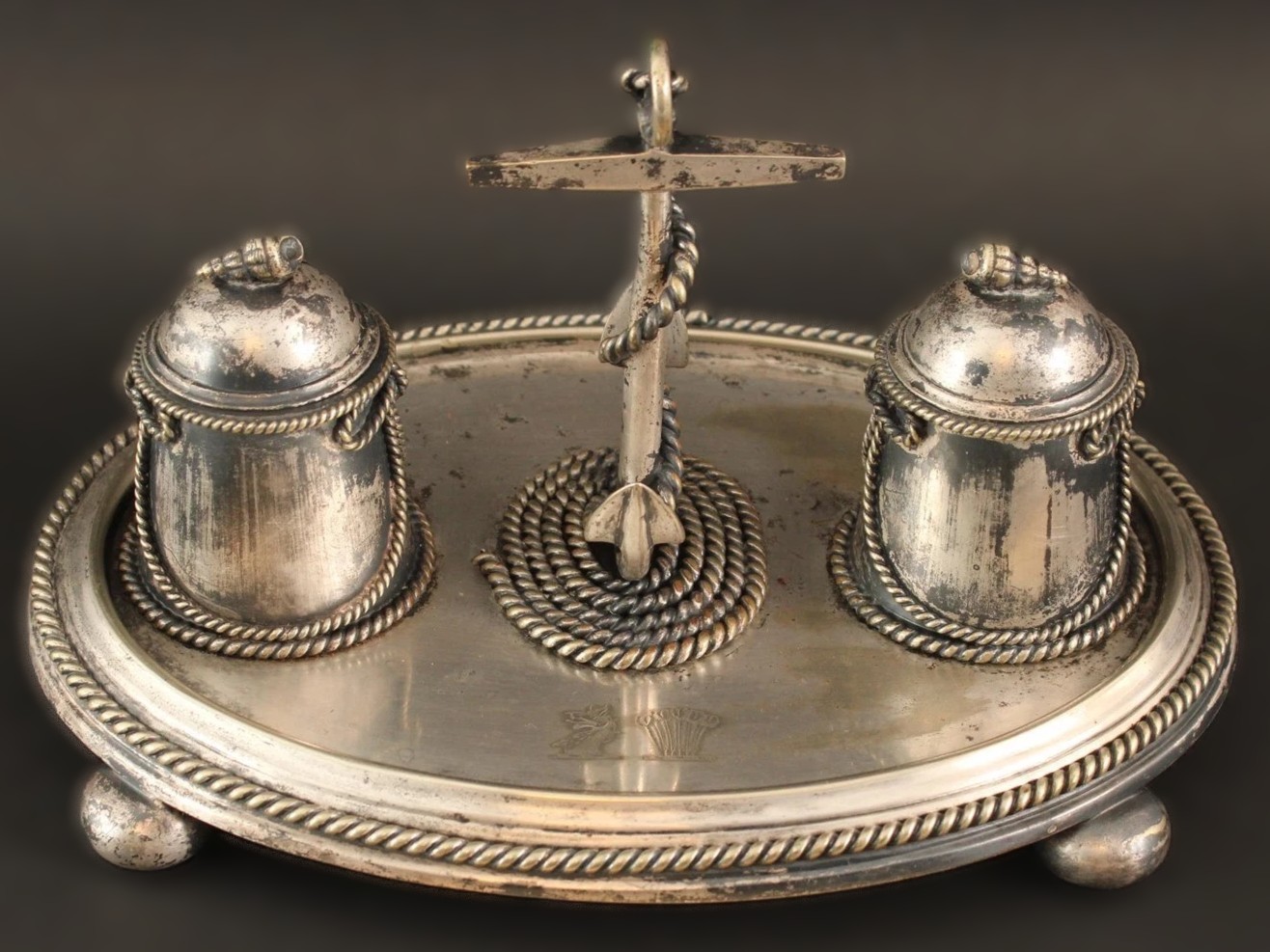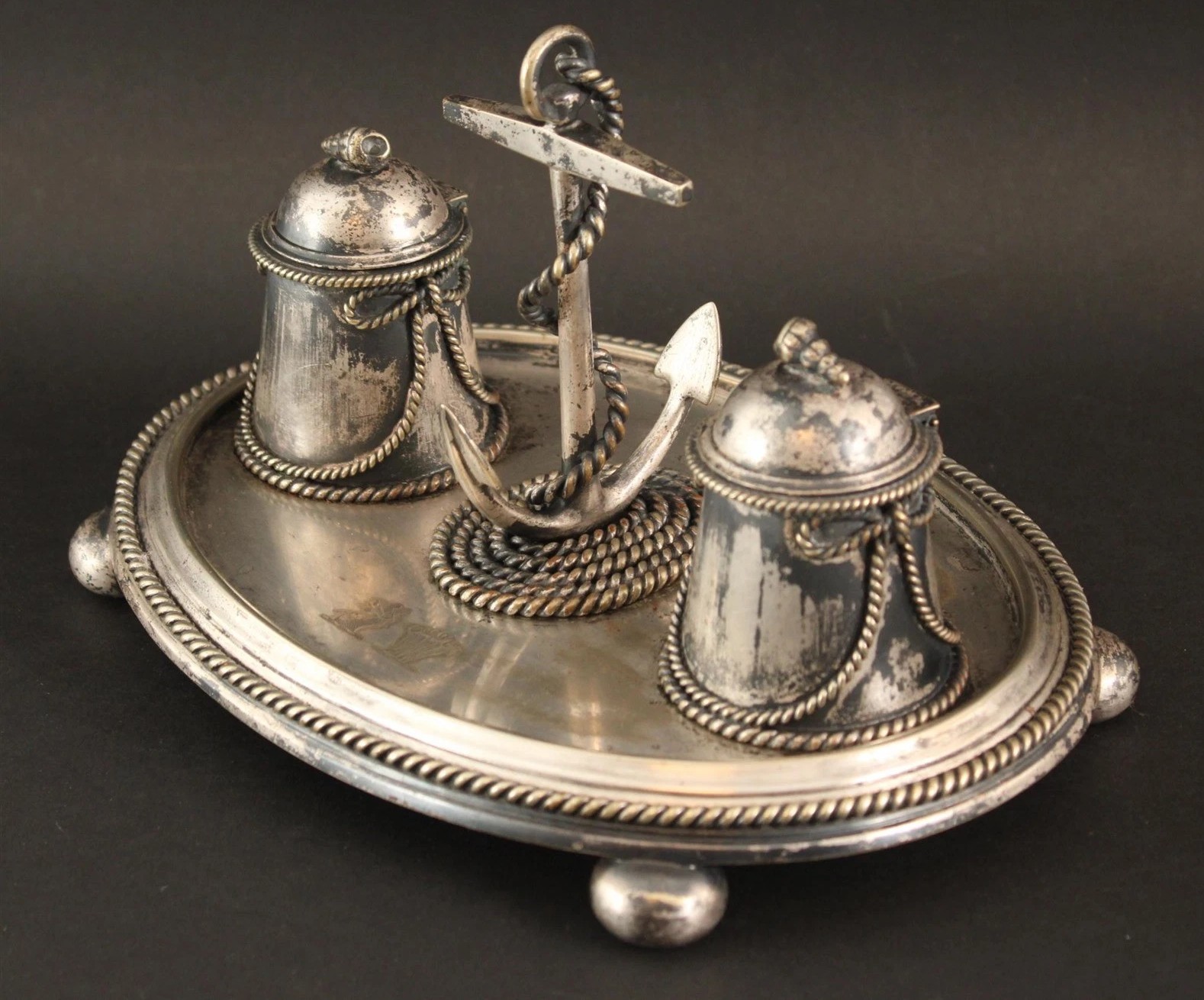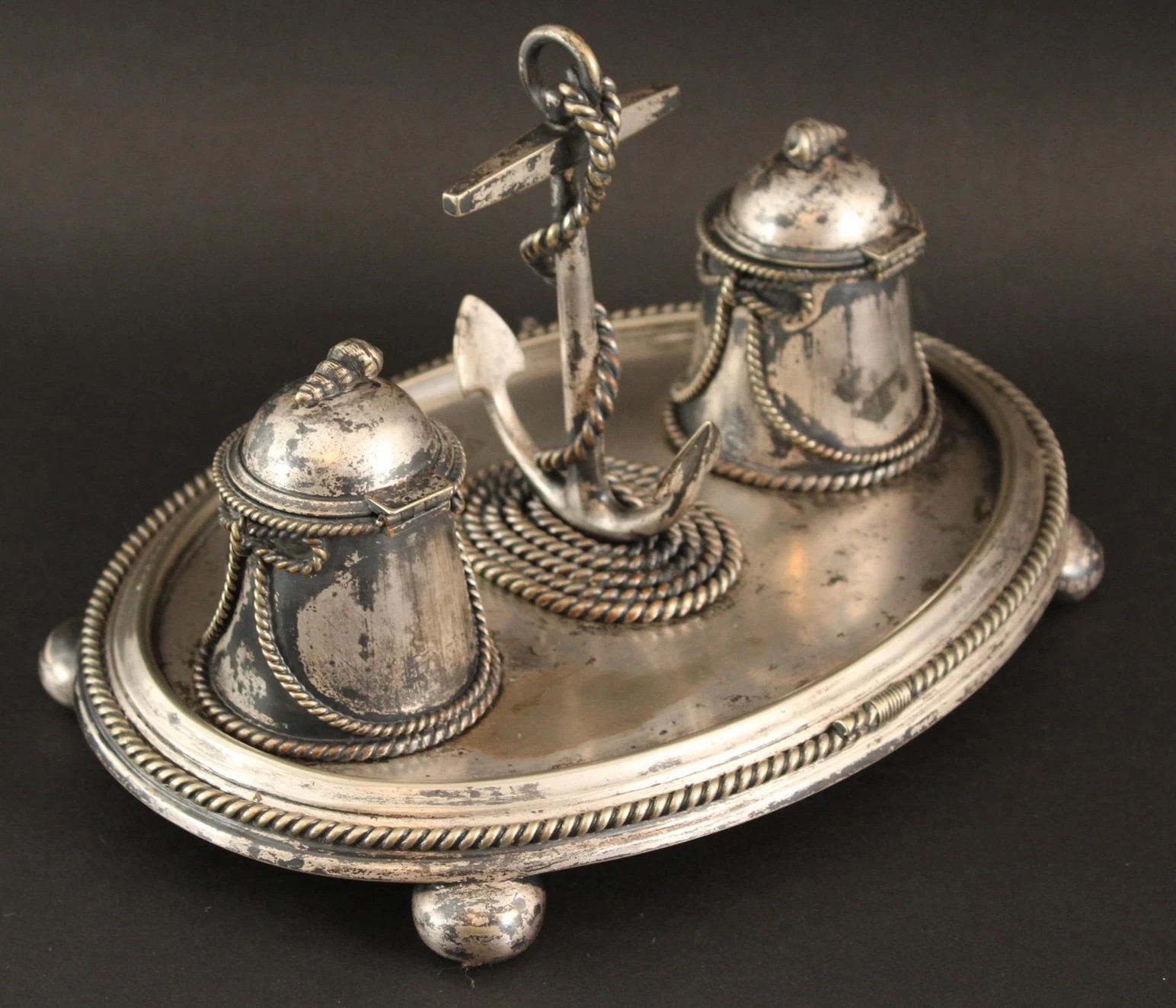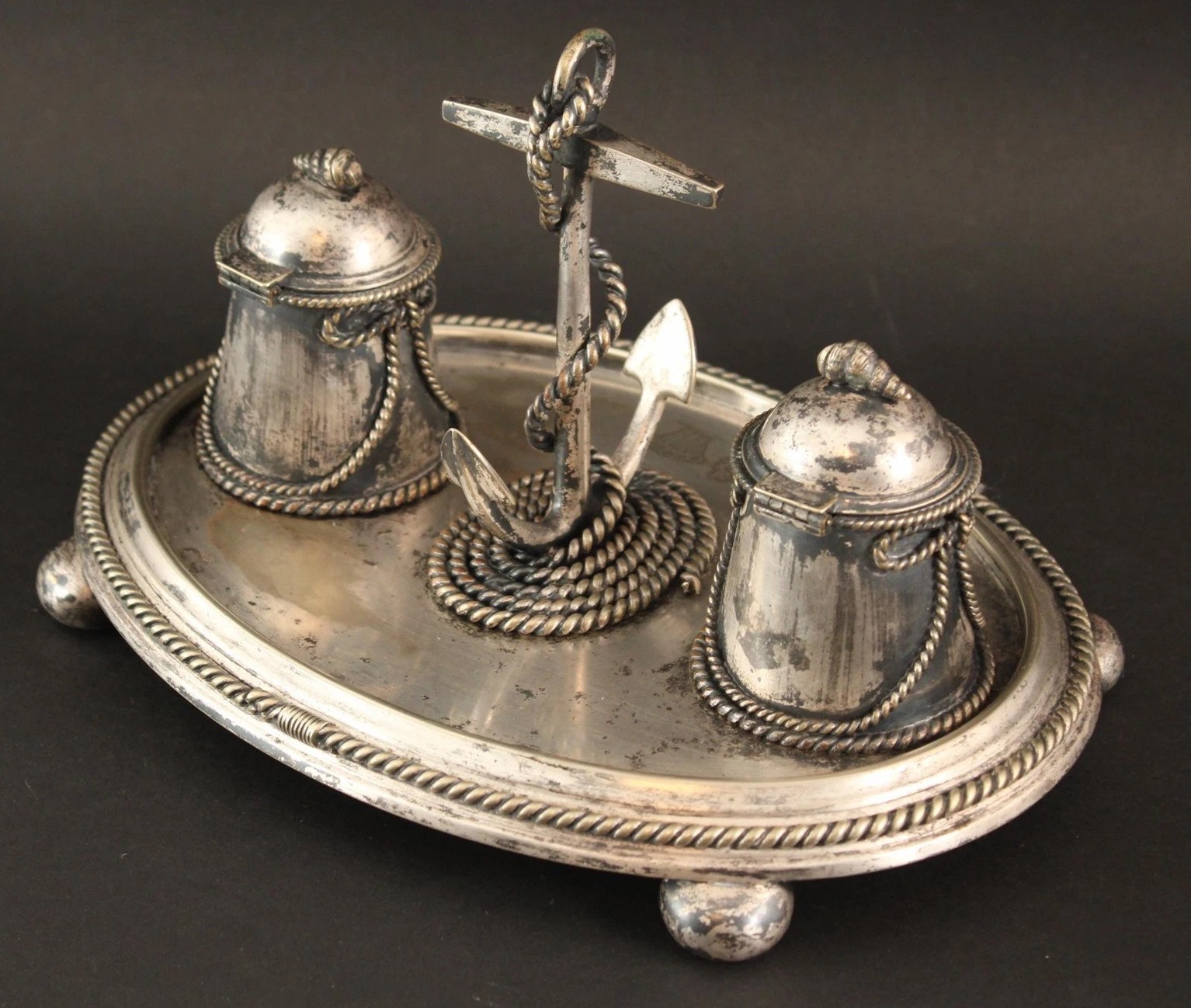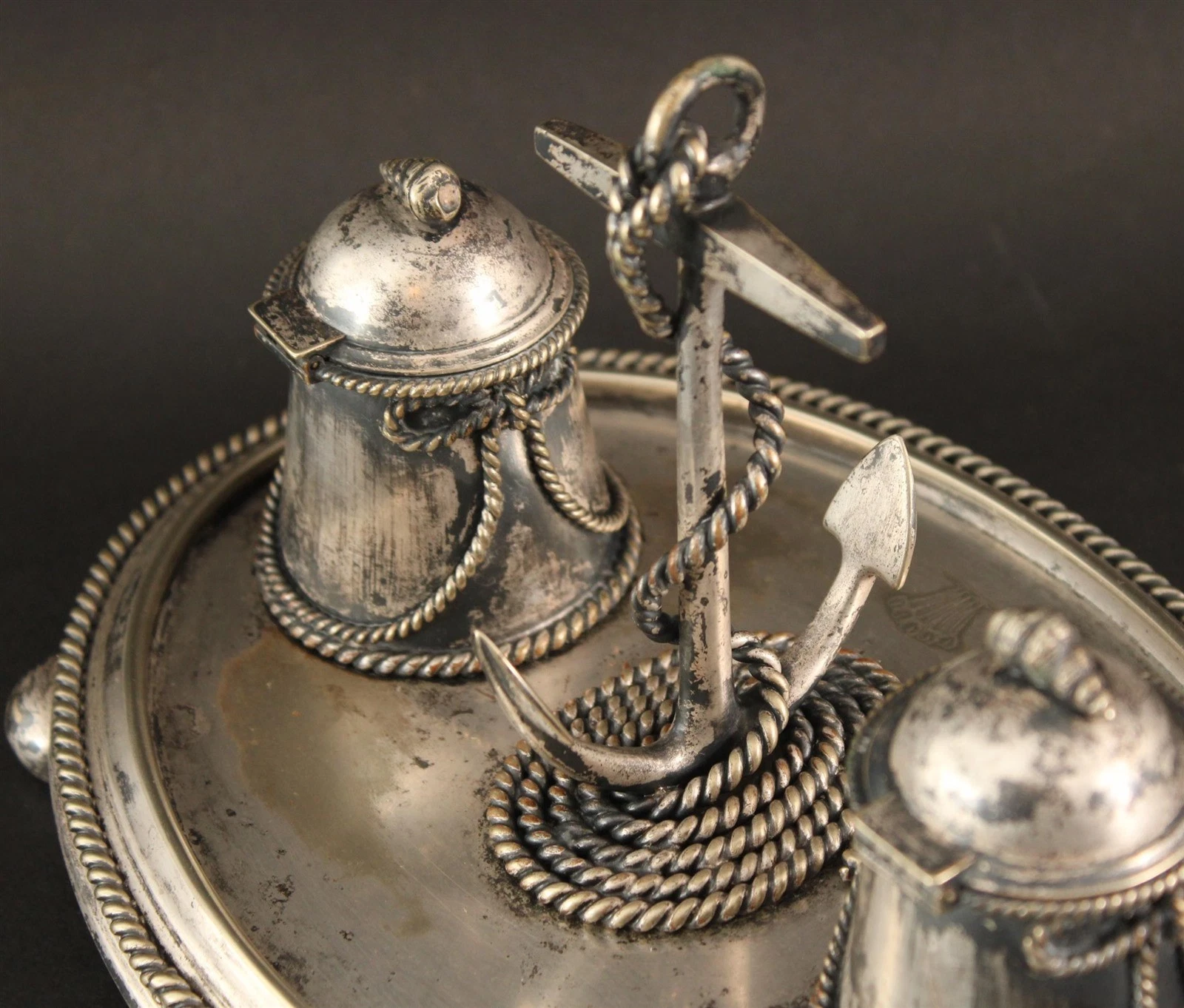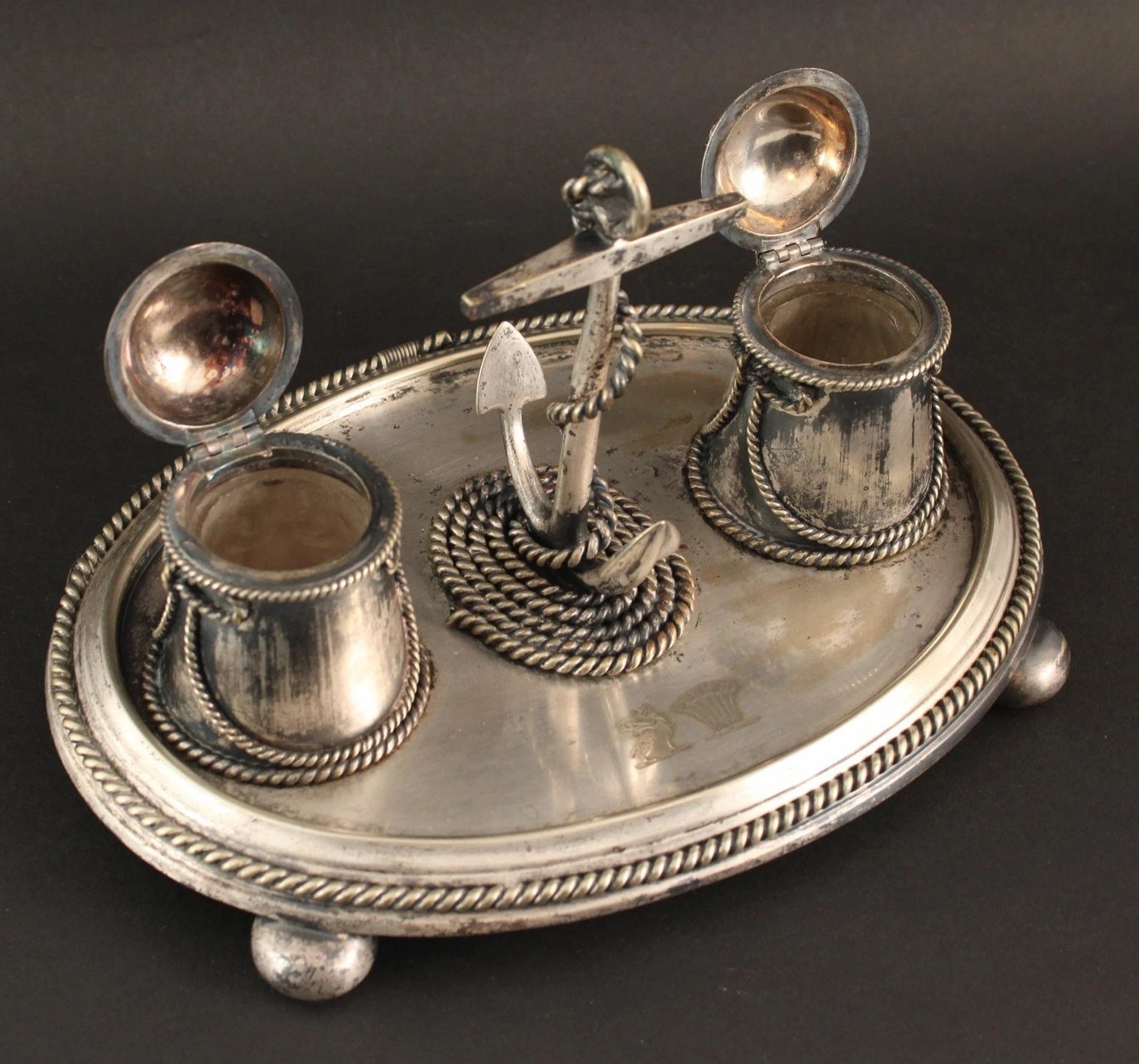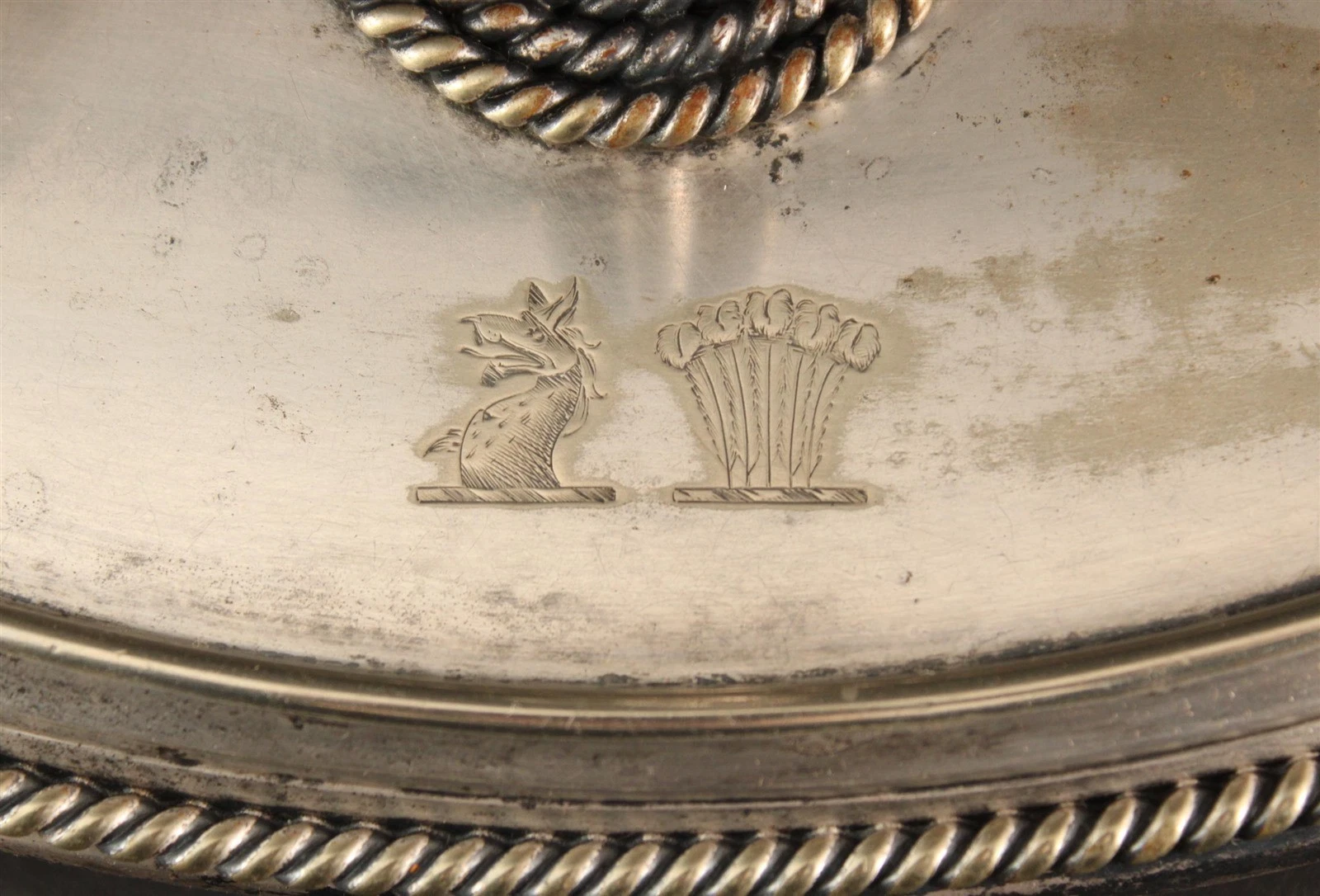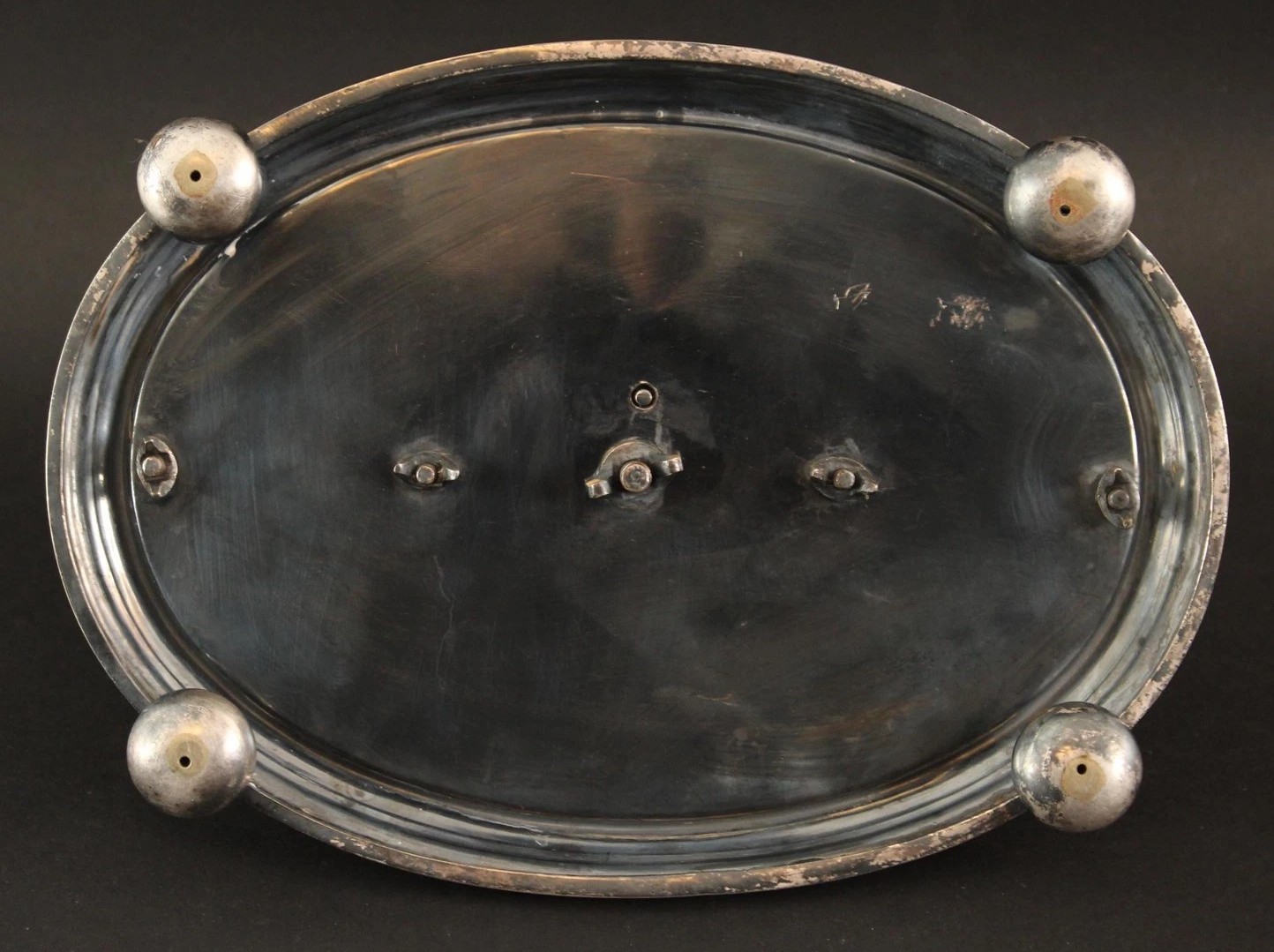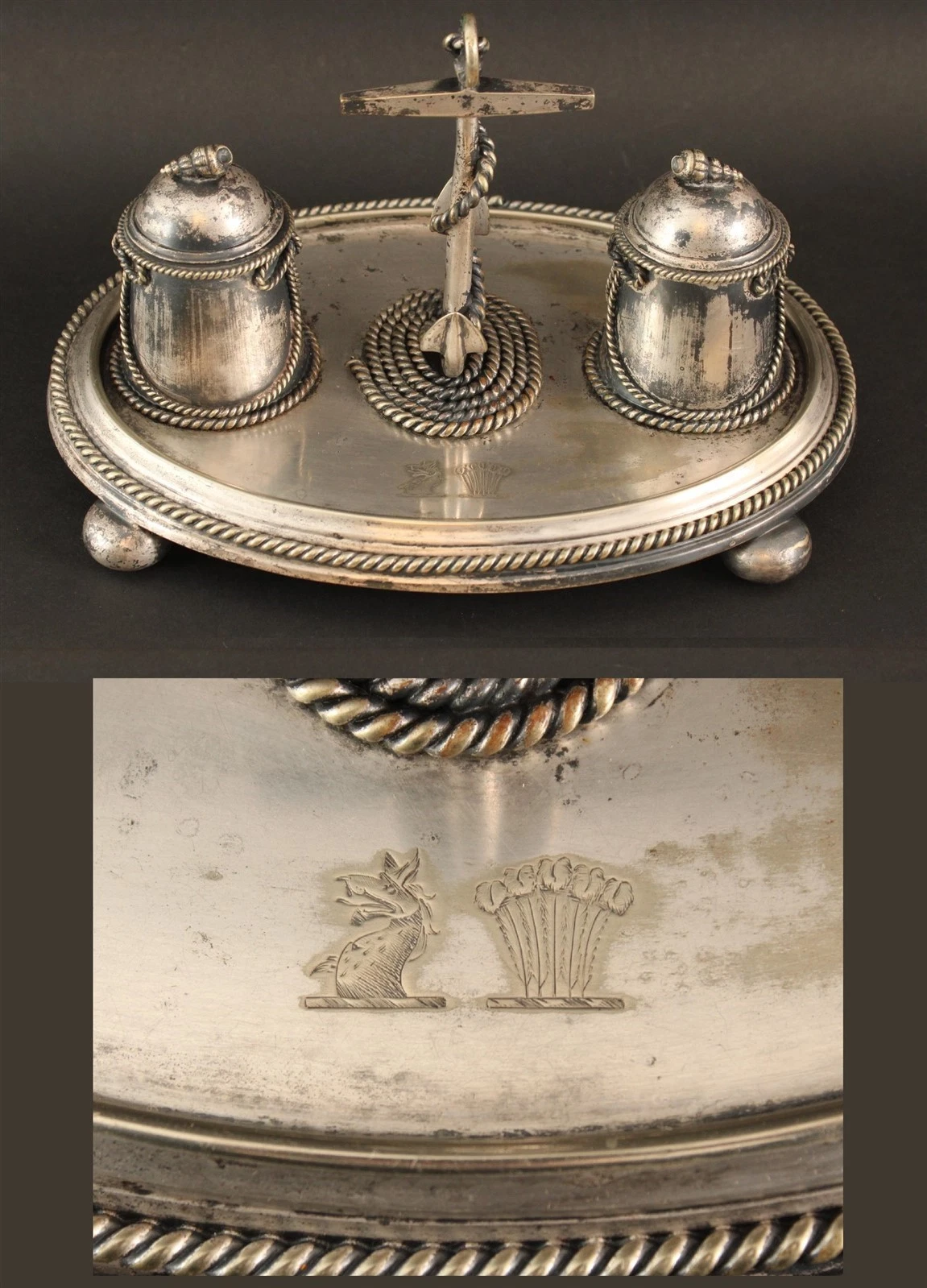
Inkipedia
Maritime Themed Silverplated Standish
| Categories | Figural - Inanimate |
| Type | Nautical |
| Material | Silverplate |
| Markings | See Narrative |
| Manufacturer | Undetermined |
| Origin | England |
| Date or Era | circa 1890 |
| Measuring | 9 ¼” x 6 ¾” x 5 ¾” high |
Description of the Maritime Inkstand
- Materials: Electroplated Nickel Silver (EPNS).
- Overall Form: An oval, footed tray supporting a central anchor and two flanking inkwells. The entire piece is designed with a nautical motif.
- The Tray: Oval shape with a deep, footed edge defined by a detailed twisted-rope border. It stands on four ball-shaped feet.
- Central Finial: A large, detailed ship’s anchor is the centerpiece. A heavy, twisted metal rope is wrapped around the anchor’s shank, forming a decorative coil at the base.
- The Inkwells: The two inkwells are figural, designed to look like sailor’s buckets or casks.
- Their bodies are cylindrical with a slight taper.
- They are decorated with twisted metal rope, simulating the way a bucket might be bound or handled.
- They have hinged, domed lids topped with a seashell or small conch shell finial.
Engraved Armorials
Two distinct, engraved motifs on the front of the tray are likely engraved crests or monograms belonging to the original owner.
- Crest (Left Motif)
- Appearance: A stylized animal, which appears to be a Dragon, Wyvern, or a Cockatrice.
- Meaning: In heraldry, a dragon crest often signifies power, wisdom, or guardianship. This is a very common crest in British heraldry.
- Crest (Right Motif)
- Appearance: A fan-shaped arrangement of stalks of wheat or perhaps reeds/bulrushes.
- Meaning: If they are wheat sheaves (garbs), they symbolize plenty, abundance, or successful harvest. If they are bulrushes or similar marsh plants, they may relate to the family’s name, land, or a specific military regiment.
- Armorial Connection: The presence of two distinct crests suggests the piece may have belonged to a couple, where the two crests represent their respective family lines (a marital or impaled coat of arms is sometimes indicated this way), or it could simply be two separate, decorative motifs.
Maker and Date Estimate
- Maker: The inkstand is unmarked. The presence of tiny screws and a central nut on the underside is characteristic of assembled silver-plated items.
- Likely Date: Mid-to-Late Victorian Era (c. 1860–1890)
- Figural Novelty: The demand for highly figural, thematic desk sets was at its peak during this period.
- Silver Plating: The quality and style of the electroplating are typical of the large Birmingham or Sheffield silver plate houses of the mid-Victorian era.
- Nautical Theme: Nautical and military themes were extremely popular due to Britain’s naval dominance and the expansion of the British Empire.
- Rope Work: The abundant use of rope detailing in the casting is a
- signature motif of mid-Victorian nautical silverware.
Sold for $523 in September 2025
Content disclaimer. The information posted is the owner’s best knowledge and may not have been vetted by the SOIC. We welcome comments, corrections, and additions, working to make our website information comprehensive and accurate.
Join the Society of Inkwell Collectors (SOIC) – it’s free!
Founded in 1981 as a non-profit organization,
we are documenting inkwells (and accessories).
We’re here to help and inform!
